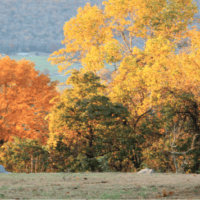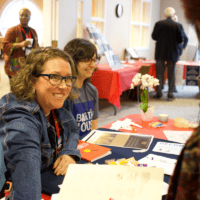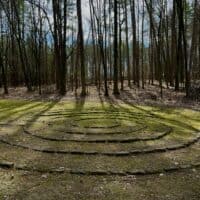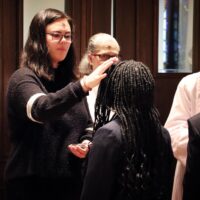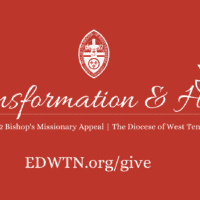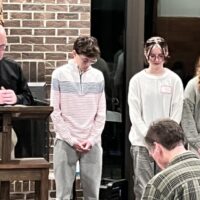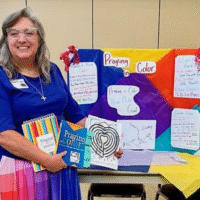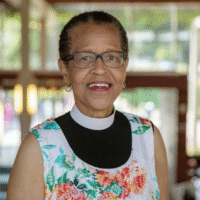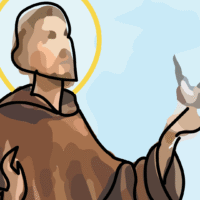On the edge of a quiet field in rural Mason, Tennessee lies a patch of overgrown land—thick with underbrush, dotted with trees, and steeped in a sacred history long remembered by those who have carried its legacy in their hearts. This is the Old St. Paul Cemetery, the original burial ground of St. Paul’s Episcopal Church; founded in 1847, St. Paul’s is one of the oldest historically Black Episcopal congregations in Tennessee. Though time and the elements have claimed many of its markers, the site bears witness to more than a century of Black faith, education, resistance, and resilience.
“This project has been in the making for years,” says Lavonnie Perry Claybon, a longtime member of St. Paul’s. “It’s been quietly growing in our hearts and minds. Now, we’re finally in a place to bring it into the light.”
Along with Lavonnie, St. Paul’s parishioners Faye Taylor Knight, Barbara Williams, and Swazoo Claybon are part of a grassroots effort to restore and commemorate the site through a new initiative tentatively called “In This Place.” The goals are both practical and spiritual: clear the land, document known and unknown burials, install a memorial marker, and offer the community of Mason, Tennessee a sacred space for reflection and reconnection.
“There are probably 100 to 150 graves here,” Faye explains. “Some stones are still intact, but others have deteriorated or been overtaken by trees and brush. I know my great-grandfather is buried here. So are many members of the Taylor family—my family. The Clevelands, the Harris’, the Hemps, the Claybons, the Burchettes, the Maclins, and other community ancestors are buried in this sacred place. So many people in this sacred place still have descendants in the surrounding area.”
Many of the people buried here lived during or shortly after enslavement, and the land itself was gifted by a landowning white family in Mason as a burial site for enslaved people and their descendants. Some oral histories even suggest that two biracial children were the first two burials in Old St. Paul Cemetery.
“The project is a way of honoring those individuals who were once excluded even in death,” Faye says. “But that history has been hidden—until now.”
Though the site has fallen into disrepair over the years, efforts to preserve it and the history it represents have persisted. Several years ago, Barbara Williams and Swazoo Claybon visited the cemetery with Bishop Phoebe Roaf. More recently, Lavonnie and Faye returned to find one of the remaining tombstones had slid into a ditch—possibly dislodged by utility work tied to the nearby BlueOval megasite. “That’s what pushed us to act,” said Lavonnie. “We realized if we don’t do something now, we’ll lose this history.”
The significance of this place extends beyond the cemetery itself. Adjacent to the cemetery once stood the original St. Paul’s Episcopal Church of Mason, before it was relocated to its current location on the historic grounds of the Gailor Industrial School, a thriving educational institution for African American youth during the height of the Jim Crow and Civil Rights eras.
Known now as Hoffman-Saint Mary’s, the School of St. Mary the Virgin for Colored Girls was founded in Nashville in 1901 as part of Fisk University. In 1911, the school moved to Mason. Gailor Industrial School, expanded to serve both boys and girls, was supported by the American Church Institute for Negros (ACIN), and offered a curriculum of academics and trades – from math and music to sewing, farming, cooking, housekeeping mattress-making, carpentry, reading, writing, and religious education.
“This wasn’t just a school—it was a pipeline for leadership,” Lavonnie explains. Among its leaders was Edward Thomas Demby, the first Black bishop consecrated in the Episcopal Church. Before his consecration, Bishop Demby was ordained a deacon at St. Paul’s and served as principal of the Gailor School. Other teachers included medical professionals, educational teachers, and seminary-trained educators who built up not only skills but a sense of dignity and community. The enrollment of 350 students included boarding and day students from 24 states being represented. In 1936, the school included ten buildings.
“The vision was so forward-thinking,” Lavonnie adds. “There’s even a document showing a proposed plan to turn Gailor into a junior college. Parishioners were asked to contribute toward it—one thousand dollars apiece. Can you imagine the faith that took?”
That vision was never fully realized. Racism, segregation, and economic injustice eventually led to the school’s closure. Oral histories speak of arson, threats, and fear. “The gymnasium was burned down multiple times,” Lavonnie recounts. “People were threatened. And yet they still built. They still taught. They still believed.”
This legacy of spiritual and educational uplift forms the heart of the “In This Place” initiative. The name itself is a refrain—spoken with reverence—echoing the sacredness of the land and the lives it cradles. “In this place, people resisted,” says Lavonnie. “They created a world of opportunity in a society trying to deny them everything. That deserves to be remembered.”
The congregation is seeking donations and volunteers to help clear the land this fall and eventually install signage listing the names of those known to be buried there. There is also hope for a future memorial garden, inspired by a similar project in the Episcopal Diocese of Maryland that honored unmarked graves.
“This isn’t just about restoration—it’s about reconnection,” says Faye. “There are people in this community who don’t even know they have roots in the Episcopal Church. This project is a way to bring them home.”
In a time when so many stories have been paved over—literally and figuratively—“In This Place” stands as a holy refusal to forget.
To support this project or learn more, go to saintpaulmason.org.


